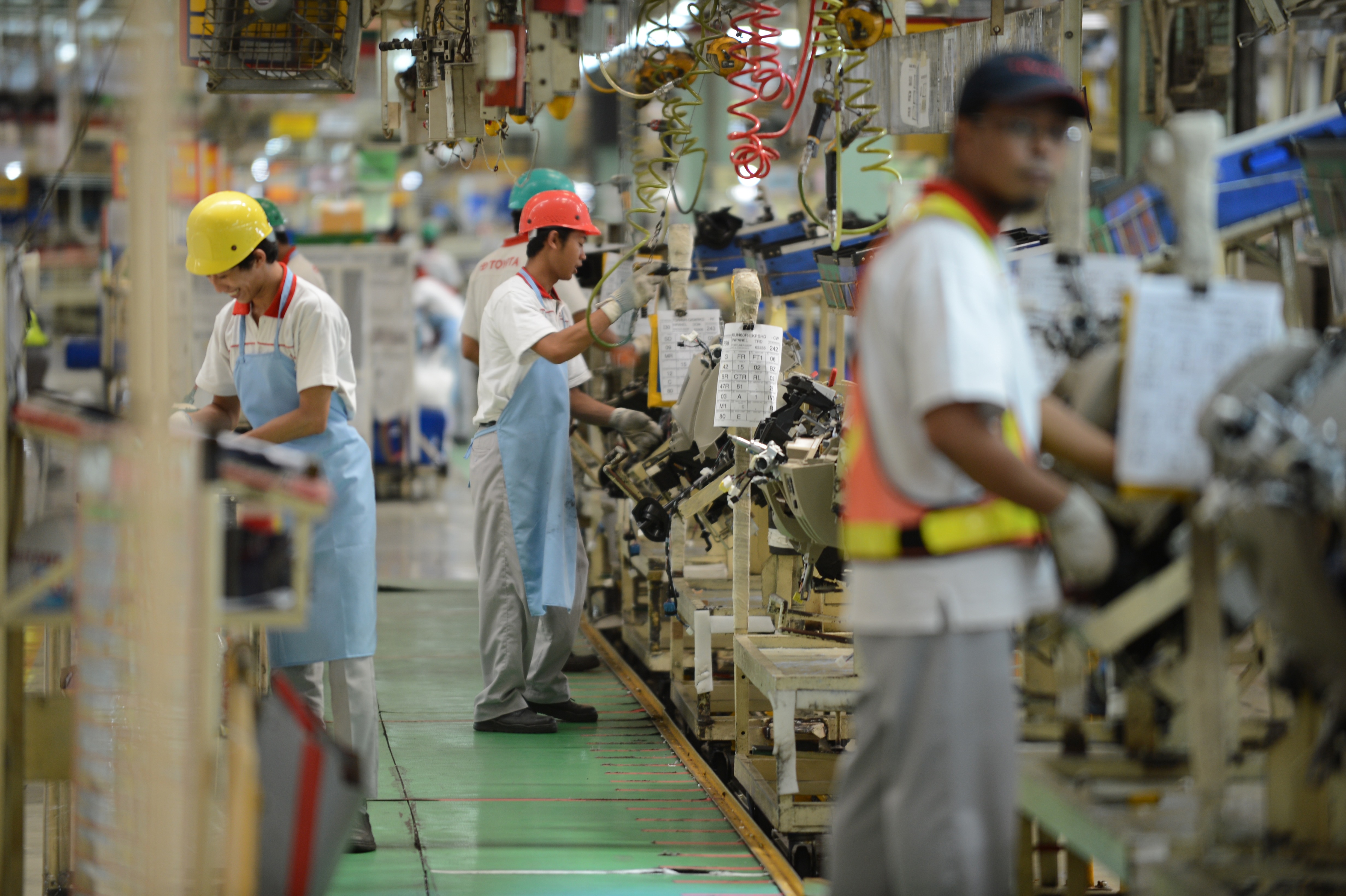ASEAN countries, which have always relied on low-skilled labour, will now have to look into ways to address skill gaps such as adoption of technological advancement to improve their competitive advantage in the digital economic era. It is timely for ASEAN countries to emphasise on digital skills in higher learning institutions to prepare their graduates with such skills. This will enable them to face the millennial workforce environment and be competitive themselves.
The World Economic Forum (WEF) said the next step for ASEAN governments is to address the skills gap and be prepared to fully adopt the Industry 4.0 or Fourth Industrial Revolution (IR4). IR4 will focus on the formulation and implementation of a strategic industrial direction to develop skills, private sector partnerships, infrastructures and capital requirements.
There is a growing need to roll out, capability and capacity-building programmes in all ASEAN countries. Singapore has already begun to roll out the IR4 through their SkillsFuture initiative. With the support of the Future Economy Council (FEC), Singapore developed an integrated high-quality system of education and training that equips individuals with skills to respond to changing industry needs. In the case of Malaysia, the Industry 4.0 programme is initiated by Penang Skills Development Centre together with Human Resources Development Fund (HRDF) to certify and upskill the current and next-generation workforce through high-valued technology certification and training programmes.
The Industry 4.0 initiative also dictates how manufacturers create smart factory through the combination of cyber-physical systems such as the industrial internet of things (IIOT).
Malaysia’s Axiata Group Bhd president and group CEO Jamaludin Ibrahim said the concept of 'digital leapfrog' should be the national agenda for all ASEAN countries. “It is about how can ASEAN leapfrog into a big game of digital, internet and broadband to create the additional US$1 trillion increase in gross domestic product (GDP) by 2026. That is the kind of advocacy that we are going after,” Jamaludin said this at World Economic Forum on ASEAN 2017 held in Cambodia in May.
Meanwhile, consulting firm A.T. Kearney said digitalisation will help ASEAN move up the economic value chain, amid an increase in labour costs in the manufacturing and engineering sectors. Technological sensors and devices are being integrated into equipments and machineries through the internet of things. Besides that, advances in computational ability are also enabling the process of analysis to be more flexible in terms of producing individual products and achieving higher efficiency. As such, the manufacturing sector will gain pace, reduce costs and increase quality. Over the next decade, Industry 4.0 will emerge in Southeast Asia, aided by support from far-sighted businesses and political leaders. It consists of the intelligent networking of product development and production, logistics, customers and beyond. We will begin to see a revolution in ASEAN’s manufacturing sector that will increase the region’s productivity and competitiveness whilst lowering unemployment rates and creating higher income jobs.
Less exposed ASEAN manufacturing industries such as automotive and electrical and electronics, will all benefit through added operational efficiencies reaped from the new technological advancements. In Singapore and Malaysia, high-value product manufacturing such as printed electronics and miniaturisation could undergo a high degree of automation and optimisation. These sectors will be among the first to integrate Industry 4.0 into their production platforms.
According to Deloitte's research paper entitled 'The Digital Economy and the Free Flow of Data', although Southeast Asia is already a major global manufacturing centre, deeper regional integration and the adoption of disruptive technologies offers alluring prospect of improved competitive advantage over other Non-ASEAN regions. Execution is key as these new technological advancements can boost efficiencies and lower costs. Southeast Asia accounts for 5% of global manufacturing activity, measured by value-added. It holds a dominant position in manufacturing of chemicals, food and beverages, metals and automotive. While that’s all good, the current position does not represent the region’s potential. The cold, hard reality is that manufacturing processes in the region haven’t yet innovated with the opportunities available or any form of deeper integration at all. A telling sign is that intra-regional trade remains at or around 23% of total exports. Value chains should be more dispersed, connected and networked, which will see intra-ASEAN trade rise exponentially. When the manufacturers adopt new technologies, manufacturers will see a big boost in efficiencies and reduced costs - estimated up to be around 20% of costs across the board. Even greater benefits can be derived if regional integration is paired with the adoption of disruptive, exponential new technologies (Industry 4.0 or similar programmes). Manufacturers in Southeast Asia have been slow to adopt and lag behind their counterparts in the US, Germany and Israel. Like integration, adoption has the potential to make a big positive impact on profits - with an estimated increase of between US$25 billion to US$45 billion by 2030.
In summary, Southeast Asia has a golden opportunity to intensify its manufacturing sector through technological innovcation, noting changes in China which are a direct result of these significant opportunities. Regional integration through tariff reduction, non-tariff measures, harmonisation and the liberalisation of services is the way to level the playing field withe Western world. However, the benefits are biggest (in terms of speed, extent and ease of capture) if integration is allied to a more wholehearted embracing of digitisation into manufacturing.
New, disruptive technologies can lead to greater efficiencies and gains (through better demand forecasting, closer linkages to production and more tightly controlled inventories). Digitalisation can also ensure that supply chains benefit for a better network for greater distribution, while still containing logistics and transaction costs. As such, it would be beneficial for ASEAN manufacturers to embrace Industry 4.0 into their businesses to take a step towards improving their competitive position amongst the worlds manufacters.
